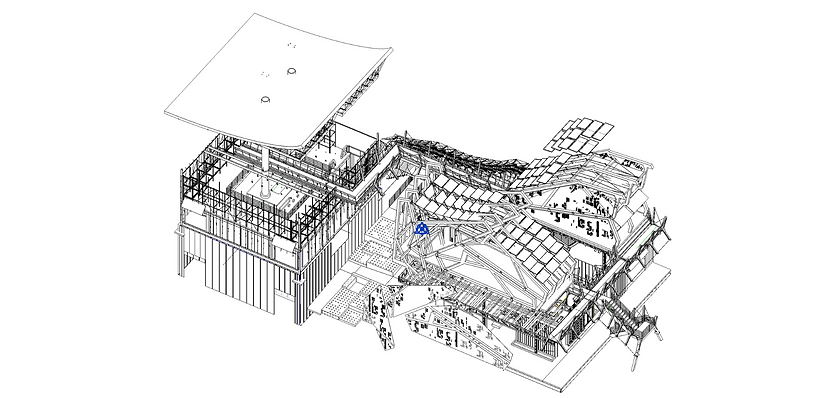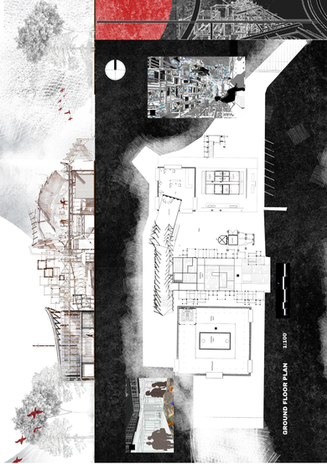PROJECT 3
.png)
This project involves designing a Neighbourhood Learning Centre in a suburban area. Students will create comprehensive design proposals based on site analysis and precedent studies. They will develop narratives that address environmental and community needs, exploring sustainable building enclosure solutions to minimize environmental impact. The design will incorporate various complex spatial organizations and passive strategies for sustainability. The final design should harmonize with the environment, enhance the site, and provide excellent spatial experiences to foster a sense of community.
Dystopia sharply contrasts with its surroundings, functioning as a rhizome within the grid. It presents chaos in stark opposition to the imposed order and structure that confine its residents. While the conventional grid enforces a sense of order, it simultaneously creates a cage. In contrast, Dystopia serves as a learning hub for upcycling, providing an escape where individuals can explore and express themselves freely within an unbounded environment
: Reflection :
The design of the Neighbourhood Learning Centre has been a profound exercise in understanding the interplay between environment, community, and architecture. This project called for a meticulous incorporation of site analysis and precedent studies, pushing us to develop narratives that respond thoughtfully to both environmental and community needs. Our goal was to create a space that harmoniously integrates with its surroundings while promoting sustainability through innovative building enclosure solutions.
A significant influence on our design process was the concept of Dystopia as a contrasting rhizome within a grid. Dystopia represents a space of chaos and freedom juxtaposed against the rigid order of conventional urban structures. This idea challenged us to think beyond traditional architectural paradigms and consider how spaces can serve as catalysts for creativity and self-expression. The notion of Dystopia as a learning hub for upcycling resonated deeply with our project’s aim to foster a sense of community and environmental consciousness.
In designing the Learning Centre, we sought to blend the structured elements of the grid with the dynamic, organic qualities of Dystopia. This approach allowed us to explore complex spatial organizations and passive strategies for sustainable design, ensuring that our final proposal not only met functional requirements but also provided enriching spatial experiences. The integration of these elements aimed to create a sanctuary where residents could engage in lifelong learning, upcycling, and community activities within an environment that supports both order and freedom.
Reflecting on this project, we recognize the importance of balancing structure with flexibility. The Neighbourhood Learning Centre embodies this balance, offering a space that is both orderly and liberating. By embracing the chaotic yet nurturing spirit of Dystopia, we were able to design a learning environment that encourages exploration and personal growth. This project has reinforced our understanding that architecture must not only respond to physical and functional needs but also inspire and elevate the human experience.





